 Today is #WorldMentalHealthDay got me thinking about the tools I use on a regular basis that has formed a solid raft in my life. It is something I come back to time and time again. It has quite literally kept me alive and at others, filled me with such peace and acceptance of who I am, what I can do, what I can not and the courage to express that. The self-reflection that comes with the practice, has helped me forge strong boundaries, grown belief in myself and raised my worth and value from off the floor. It costs nothing to do except time and needs nothing of great importance to practice. I do it as needed, so it has become an integral part of my life; and that of my children. I consider it to be one of my most valuable tools for life and up there with how to cook, change a plug and earn money. Mindfulness is a deeply complex subject and something I’ve been exploring for over 20 years but for me, it simply means to be awake at the moment, of bringing my attention into the now. Of tuning into the present, still my mind and slowing down. Feeling inside my body, feeling anchored into the present moment. And it’s by being here right now and awake and aware at this moment that brings me time to be in creation of my behaviour rather than in reaction mode and playing out past outdated programming that’s been triggered within me. It’s when I am in this place of being, in this place of awareness I can choose to move my focus of attention from what I don't want to have happen, to what I do. It gives me time to consciously create the steps to take me and the situation that I am into a positive conclusion. And to help do this we can use our senses. By focusing on what you can see or hear around you, what you can smell, what you can taste, what you can feel, leaning into where you are right now rather than brushing it under the carpet and using the numerous distraction techniques we have all mastered. Using your breath and doing some focused breathing will rapidly change how you are feeling. It will regulate your nervous system helping settle your brain so you can think more clearly, changing your emotional state from the fight or flight mode, to the rest and digest mode. Focused breathing will pull your attention from the negative spiral of thoughts about what could happen, what has happened, the worry and fear around that, the overwhelming feelings that are coursing through your body and reconnect you to an anchor; the breath. It will help you stay connected to the present moment. Where you realise you are safe and all is well in this moment. It is in this state of ‘being’ that we have a choice, you have the ability to choose the direction you wish any particular situation to go. We can create an anchor with our children and ourselves really easily. You can use their favourite teddy, my son had a clothes peg he would squeeze when he was overwhelmed, space can even be an anchor, sitting on your favourite part of the sofa can be an anchor. One of my anchors is up by the cooker, being at the helm of my home. I like to use one which incorporates a bit of EFT tapping and breath work and when I use it my body relaxes and my mind goes still. It brings me back to myself. It regulates my nervous system and deescalates situations really quickly. It’s one of those things that the more you practice the more effective it becomes. Start by tapping the edge of your fingertips tips, by the nail, with your thumbs, go through each finger, however many taps and cycles you need and at the same time take a deep breath in through your nose for the count of 4 and out through your mouth with pursed lips, for the count of 6; or longer. I like to call this Ninja Tapping or Stealth Tapping because you can do this in the supermarket or the children can do this under their desk in school and no one will see them doing it. Try it now… As you tap and breathe bring your focus of attention to this and only this, notice how the body relaxes, your shoulders will drop and your mind goes still. Our mental and emotional health is as important as our physical health. We need all three in balance to experience a positive and healthy life and there are a lot of amazing tools out there that can help. We have a Positive Parenting online course that is free at the moment if you fancy that or if you would like any more info or have any questions then please get in touch I'd be happy to help. Big Love, Trish, Founder of WiggleBums, NLP Master, Trainer and Integration Therapist
0 Comments
As you may know, self-regulation and mindfulness plays a massive part in our wiggleBums and wiggleKids classes. One of the techniques we use is called ‘Flipping your Lid’ because when you have a visual and you can see what happens in the brain and understand what’s happening in the body, it can help us gain conscious control over our behaviour and bring us back into right relationship with ourselves, change what the brain does and change those negative patterns of behaviour.
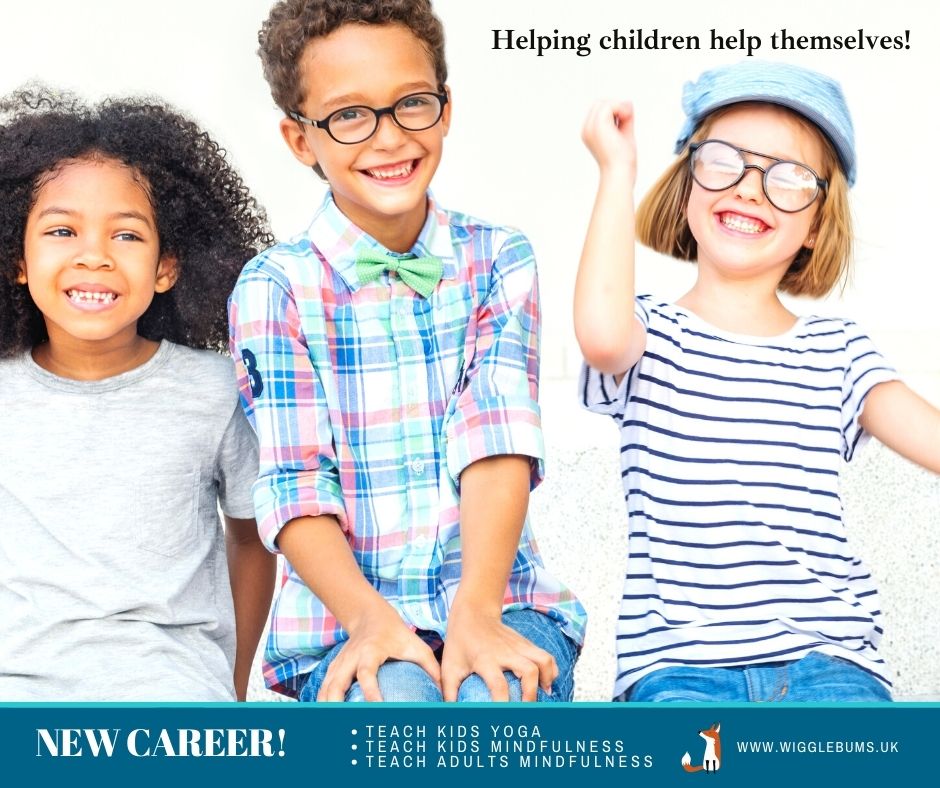 Mindfulness is about recognising what you are feeling in the present moment and naming that. Staying in contact with what is happening right here right and now and allowing oneself to feel all of that. This is something that has been conditioned out of us as children. For many of us our BIG emotions, tantrums, or times of struggle could not be handled by our significant others and were stopped through various methods from chocolate biscuits, to be separated from the rest of the family to being chastised, belittled, shouted at or even slapped. We were taught that who we are in our times of despair was too much, we were unloveable, not likeable and as such, we needed to suppress, hide, distract and not feel those feelings or voice our upset. When all along the person who ought to have been guiding us just did not have the skills in place to do so. What a different landscape it will be when our children have grown in an environment with a mindful practice as the cornerstone of life. When we give our children space, support and guidance to be and work through their difficult experience it's amazing how fast they move through. When they are not given this space and the experience isn't allowed to be felt, acknowledged and understood and so gets stuck and will keep getting played out until adulthood in the hope that it will eventually be understood, healed and cleared. Rather than focusing on getting rid of any negative thoughts and feelings mindfulness offers an opportunity for you to lean in safely and with intention working through those big emotions, thoughts or behaviour and clearing it once and for all. WiggleBums & Mindset Matters Weekly Mindfulness classes x Your mindset determines your experience of the world and impacts throughout all areas of life. It affects your motivation and productivity and will invade all key life areas from relationships to finance.
It is an essential building block to growing self-esteem and self-worth and will be the difference to succeeding at something or not. It affects our daily self-dialogue, that internal voice and plays a critical role in how you cope with life's challenges and setbacks and reinforces our most intimate beliefs, attitudes and feelings about ourselves. When a child is brought up with an 'I Can - I Am' attitude life's challenges are just that, challenges, that they can discover how to work through and overcome. Their resilience grows as does their self-esteem and confidence. They believe in themselves and their abilities, that they have a place in this world, that they deserve to be here and that it is o.k to shine. Their positive growth mindset shows in what they choose to do and be. When a child is brought up within an 'I Can't - I Fail' environment when they haven't been allowed to make decisions for themselves, been constantly criticised for getting it wrong or not been given the space to have a go at life with an 'everything is a learning' attitude, they will find life's challenges too much. Their resilience suffers as does their self-esteem and confidence. They lack belief in themselves and their abilities and it shows in what they choose to do or don't do. The brain adapts to the environment that it has and will respond perfectly to it. Some brains grow in a loving, conscious, happy environment and so it will be shaped to respond to that. Other's will be living with violence, the constant risk of being attacked either verbally or physically or both and it will adapt to that. In the latter a combination of freeze, fight or fly will be the preferred mode of protection. A child may withdraw and play it small to scared to put themselves out there, some may be in fight mode or on the defence. Whichever it is, the brain is working in direct response to their upbringing, what they have been told to believe about themselves and the world around and is working perfectly to protect themselves at all times. Both of these mindsets will be re-enforced over time through experience and will determine how they live their life. A mindset is developed by the projections, judgements and assumptions of significant others and reinforced through experience...
What you put in you get out! Children will only ever live up to our expectations of them and so it's up to us to help create a positive growth mindset by being aware of;
By becoming aware and consciously deciding on how we respond to children we can then create the space to start establishing a new way of speaking and being. Keep your eyes peeled for the next blog about language and how we can structure our sentences to have a positive impact on the children in our care. If you can't wait for that then you can use the code PositiveParenting1 at checkout to grab the Mindset Matters online course - Now only £37 until Midnight Sunday 26th April. Big Love, Trish x 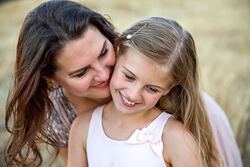 How many times have you asked your child to put their shoes or coat on or do several things every day in which their reply is 'NO' and the start of a battle? How many times have you asked your child to go up to bed or brush their teeth or tidy their room in which their reply is 'NO'. How many times a day do you ask and they say, 'NO! I was at soft play yesterday with my five-year-old where I overheard a Dad make the classic mistake of saying to his daughter, "Do you want to put your shoes on now?" and she replied "NO!". I had to chuckle because then ensued the cajoling and the bribery that we all do just to get the little darlings out the door. You see the big mistake he made was when he asked. It is in that crucial first instance when we say "Do you want to put your shoes on?" Ahhhhhhh NOPE!! "Do you want to go to bed now?" Aaaahhhhhhhh NOPE! "Do you want to get your coat on?" Hahhahhahahaha aaa 'NO!'. Give a child the option of putting shoes on and going or the implied option of keeping them off and staying at the soft play they will always choose the latter. We need to focus on the command, what we DO want them to do e.g. "Come and put your shoes on now" "Put your coat on please" "Bedtime now, up we go". Never give them an implied better option because they will always try and take that. Giving them options and choices is great to grow a sense of empowerment and build decision-making capabilities, but I recommend only giving them choices between two things you want them to have or do. For example, "Do you want to put your shoes on now or in two minutes when I've finished putting Jame's shoes on?" "Do you want to brush your teeth before the story or after?" "You can get dressed whilst watching your program or it will be turned off and I'll get you dressed without watching your program?" By allowing them to decide between two choices YOU are happy with gives them a sense of power over the situation and will enhance their decision-making capabilities for years to come. When I started to change my language in this way I was so surprised at how often I asked my kids to do things instead of focusing on the command; and just how well they responded once I changed. Try it and see. Big Love, Trish, Founder of WiggleBums & WiggleKids x My eldest is nearly 18 and I so wish I knew then what I know now. Although, to be fare it has seen us navigate the teenage years relatively unscathed!. My daughter is 5 and has been raised on this technique, that quite literally changed our lives!
I didn’t realise how important language actually is in influencing people’s behaviour until I started to put it into practice. It was a challenge at the beginning, because we are all, to one degree or another, brought up in a similar fashion when it comes to language and the words that our chosen to speak with our children. I believe this technique is revolutionary and everyone who cares for children ought to be taught it as it benefits both children and adults alike. Simply put, we need to ask our children what we DO want of them and not what we don’t. The brain at this age is very undeveloped and hasn’t learnt to recognise ‘negatives’ such as ‘don’t’ ‘try’ and ‘stop’. They are just making sense of language and what it all means and we take it for granted that they can interpret what we are asking from them. So when we ask them to do something we actually DON’T want them to do it is all very confusing. We are asking them to work out not only the words and their meaning but also what it is exactly we are asking of them to do. It’s much easier to deliver a straight forward, positive command; for example: “If you don't eat your tea you won’t get any pudding” The command they are hearing is ‘eat your tea and you won’t get any pudding’ See how confusing this is for them and the focus is on not getting any pudding! Flip it to: ”Eat your tea and you can have some pudding” Another example: “If you don’t get your shoes on we won’t go too the park” They are hearing ‘get your shoes on and we won’t go to the park’ Flip to: ”Get your shoes on and we can go to the park’ “Don’t run!” They hear ‘RUN’ Flip to ’Walk’ “Don’t spill that!” They hear ‘Spill that’ Flip to ”Keep the water in the cup’ You will be surprised just how many times a day we command our children to do the stuff we DON’T want them to do and they, in their innocent way responds perfectly; by doing it. So start to ‘FLIP’ your language for the opposite and positive, what you DO want them to do and see how your lives blossom. Ask your self “What is it that I really want them to do?” Because remember, our children only ever want to please and do what is asked of them and will always live up to your expectations of them; no matter how low or high that is. They are only after praise and love and kindness and connection and clear direction. This technique wraps all of that up and helps create a super positive growth mindset for both you and your child which will have a huge impact for years to come. If you feel too, I’d love to hear how this changes your daily experience; please share in the thread. Big Love, Trish, WiggleBums/Kids Founder x In this episode I’m joined by my very special guest Carol Powell, Carol runs Chatterminds which introduces mindfulness to children and teenagers aged 4-16, and their parents. Carol particularly specialises in working with children who have anxiety and helps them to navigate life using various mindfulness techniques.
My experience with this led me to make 'Sleep' and 'Rest' an integral part of our WiggleBums Classes. We have so many mums scoff when we tell them about the relaxation part of our classes. One mum literally spat her tea out all over me whilst saying "There is no way George will do that!" Sleep is fundamental to our health and well-being and plays a massive part in how we behave and learn and grow as individuals. There is so much value placed on the 'Doing' of Life and so little on the 'Being'. Each class, after we have explored and play and laugh we rest. We rest and digest all that juicy information our bodies and minds have taken in. It is an integral part of growing and one that is underplayed and overlooked as important. Time out to settle into one's self and just 'Be' away from the distractions of life, of screens and the next activity is super important. Within the pauses sits the potential. And so the time to cwtch up with our blankies is one of the cornerstones of a WiggleBums/Kids class. Here's our 3 C's to a good nights sleep... COSY: We all need to feel warm and cosy in our beds and in our rooms. Having a space that is clean and tidy and warm is paramount to feeling cosy, safe and contented. Sleeping in the 'right' direction for our inner sat nav is uber important too. Ever slept in a hotel or friends bed and just felt the 'wrong way round?' If your child isn't sleeping maybe the bed is in the wrong place for them. My son, when he did sleep would end up at the bottom of the bed and I was always putting him back the other way. He was actually telling me which way was better for him but I couldn't see it. Being cosy and lying in the right direction is super important to have a goods night sleep. As is turning off the stimulus, and creating a low light warm glow that literally holds you and will support you while you sleep. Bedding and mattresses for kids can be overlooked simply because life gets in the way and you're not sleeping in it every night so may not know. Check to see if their bed is super comfy and you would like to sleep within those sheets and on that bed yourself. If the answer is no, well... CONSISTENCY: Children love routine and structure; they really do. It makes them feel safe to know what's coming. I often give two choices at bedtime; both of which I'm happy and want. "You can brush your teeth now and then story OR you can brush your teeth after the story?" Giving choices like this gives them a little bit of control over their lives and let's be fair, children don't have much do they. Being consistent in your bedtime rituals also means being good with your time management and giving your child fair warning and not dropping the bombshell in that panicky, snappy kind of way; helps. Our children will just pick up on and play out the underlying emotion that we are carrying. So give yourself the time you need and together with your child discuss and create a new bedtime routine conducive to sleep. It may take a few goes to get there, but you will. CONNECTION: I remember it was the lack of time for me that use to drive the need for my son to sleep. I would feel like he was not sleeping on purpose. I was taking his behaviour personally when in actual fact he was sensing the lack of connection I had towards him. I had given and given and given and given and now I was emotionally snapping and needed a break and that break was teasing me on the horizon; if only he would sleep. It was this that he was picking up on. My lack of connection to myself and him hurt his emotional body and created a sense of fear and separation which was then driving the nighttime shenanigans that took place. I was lucky enough to have a great homoeopath that prescribed an amazing homoeopathic pill that just sorted out his fear of separation, and truth be told mine too. I also had a wonderful friend who pointed out I needed some time to connect back in with me each day. Didn't have to be much but just enough to feel filled up a bit. Then I could give that little bit more at bedtime and not need my time out in the eve like someone who was starving. My eldest son was a great teacher for me and now with my third child I am fully present and connected to myself and her at bedtimes. Pillow talk just before she nods off is usually when she tells me about her day and who did what to whom and why. It's a chance for her to offload and feel the love and safety I have for her. It's a necessary part of our day, an activity if you like that helps build her emotional intelligence and helps me stay connected with her and her needs. Once she's ready she rolls over and falls swiftly asleep; she sleeps like a log and so do I. Over the 18 years as a mum, I've learnt that if I want a happy, chilled bedtime then I need to get happy and chilled myself. And when I'm not it is a true indicator that I haven't given myself the time to rest and renew that day. I've created a consistent routine that has plenty of time for me to do everything I need in a calm and loving and mindful way and she has the cosiest room and bed ever! I also always welcome her into my bed and snuggle her in helping her feel safe and loved anytime she wants. I love this time more than any other and knowing what I know now it really doesn't last for long; so very different 18 years on. I've learnt to throw away the manuals on how to raise kids and follow what is true for us, true for that child I'm with at the time, they are all different but they all need the same things in life; to feel safe and happy and loved; don't we all... On a side note, if you have tried all of this and your likle boo is still not sleeping then it could be something physical such as adenoids or super sonic hearing. I say this as it turned out my son has Super Sonic hearing. He comes in at -15, a dog is -25 and the average human is +75 so, the slightest noise would wake him up! I kept the radio playing softly just outside his room to wash out any sharp noises that could happen in the night and now his a teen he wears ear plugs. If sleep is a real issue please consult your doctor and check these things out... By Patricia Maddalena, Founder of WiggleBums/Kids and Integration Therapist at www.livingfree.eu 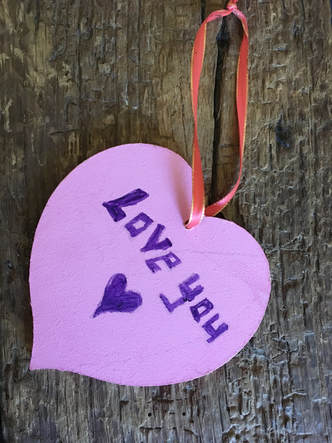 I really wanted to share something with you that I learnt on my WiggleBums training it has had a dramatic influence on my life this week. So the story starts last week when my daughter stepped into her power and point blank refused to take a bath and wash her hair when I asked. We’d been camping she was all kinds of grubby and her hair was in one matted dreadlock at the back of her head! I thought, in my wisdom, that the best way to deal with this was to wash her hair and smother it with conditioner to remove the knots. She did not agree and let me know in no uncertain terms that she did not want to bath. I took a breath! All my heckles were up and I could feel my anger building. We were in a hurry I didn’t have time for an argument. I asked her what she needed so she would be ready to take a bath. She said she was hungry. “Hoorah” I thought, and immediately scrambled down stairs found a cracker and some hummus and brought it back to her. Her response of “I don’t want that!” sent me into orbit. Luckily my husband saw the escalation and stepped in so I could go to another room and breath deeply before she got it with both barrels. I calmed down, she apologised and you would of thought that would have been the end of it. But no. Two or three days later she came into the office while I was working bringing me a wooden heart I’d made for her a couple of years earlier, that normally hung from her wardrobe door handle. I had written I love you on it. She handed it to me and said “ You should have this back I don’t deserve it.” I looked confused. She carried on; “I was really rude to you the other day so I don’t get to have this any more.” It was at that point I realised how much of an effect our argument had had on her. She believed that her rudeness had stopped me loving her. I couldn’t believe it. In my adult mind the argument over bath time was nothing. A small blip in an otherwise pleasant day. To her it had removed my love and made her unworthy of it. This is where my training kicked in. I realised I needed to let her know in no uncertain terms that I loved her, every bit of her, even the bits that shouted at me and were grubby and had knots in their hair. I sat her down and tried to explain that just because I was cross it didn’t mean I didn’t love her I just wanted her to have a bath. I explained I loved EVERY bit of her and she responded with. You don’t love the bit that makes my room messy or the bit that got slime on the carpet or the bit that doesn’t like going to bed. She had a huge long list of bits I didn’t love. I felt heart broken that she felt like this. I needed her to see it from my point of view. So I tried again. How was I going to do this without agreeing she could have a messy bedroom and not wash her hair and stay up all night??? Then it came to me. Something I’d heard in my training. I do love all the bits of you I said. I just don’t always agree with the choices you make. We all make choices all the time and sometimes your choices and my choices are different but that doesn’t mean I don’t love you. With that she seemed satisfied. Retrieved her heart and wondered off singing a greatest showman tune. Later that day she tested me again. As she lay on the floor and refused to get up to go and clean her teeth she asked; “what about this bit do you love this bit?’ I love you I replied just not digging the dirty teeth choice. She smiled got up and went and brushed her teeth. Hopefully I’ve redeemed myself a bit and helped her to understand me a bit better. Love Tracy WiggleBums/Kids Monmouth x http://www.wigglebums.uk/monmouth.html 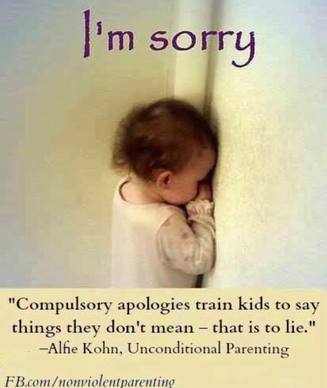 I use to feel the social pressure of the perceived judgement of other parents and would demand a sorry from my child. I remember trying to extract a sorry from my 18month old when he took a tractor from another boy, the panic rose inside and I madly found myself apologising to the other mum. I'm so glad I've moved away from this. Children's minds are not developed enough to give an apology on demand. They haven't had time to work out what it is they have done, let alone FEEL sorry for it. I've dropped trying to please societies pressure and I've moved towards my children 'FEELING' what's happened first; this is the gift. In each altercation, there is an opportunity. An opportunity to build emotional intelligence, to grow empathy. My children, even my youngest at 18 months, given the time and patience would FEEL the others pain. I could see it drop into their little bodies. The eyes would change, the body, the voice and energy, there was concern and empathy in their body and THAT is the apology. My little girl would toddle over and smooth her brothers face, or bring him a toy, THAT is the apology; not that 5 letter word that is thrown at a situation without thought or feeling just because its a done thing or to get us off the hook. We have an opportunity to grow the emotional intelligence and enhance empathy in all of our children. Lets breath and take the time needed, without blame and judgement and teach our children probably one of the biggest life skills there is, to feel another's pain. In this way, it acts as the preventative tool. As they get older they already know the consequence of actions and it is this that stops them from bullying or being mean and not the fear of being slapped or isolated from the rest or shouted at. We have an opportunity, so take it, even if it is uncomfortable at first when all are looking at you. So here are the four steps to true Resolution 1) Make sure the injured or hurt child is alright, the broken toy or situation is safe.. 2) Be gentle, describe what's just happened to your child, show them the pain and sadness the other is in or you are in. Get them to look at the situation and ask them how this makes them feel and where they feel this in their body; without the need for a direct answer as such. Older children can put it into words but with younger children, you'll have to help them name the feelings 3) Ask them what can they do to help their friend right now. What they can do to help the situation. Trust your child will feel the others pain and their own. They will 'feel' the sorry and affirm this in them noticing the 'sorry' when it comes. 4) Be big enough to drop it and not hang on to it and welcome the child back in with a clean slate. Don't refer back to it with blame and accusation rather refer back to it with the resolution in mind and how well your child worked through it and resolved it. |
AuthorWiggleBums Teachers, Parents & Children Archives
October 2021
Categories |
- Home
-
Teacher Training Programs
-
Teach Kids Yoga 2 - 12
>
- Teach Teens 12 - 18 years
- Teach Mindfulness and Meditation to Adults >
- Teach the Mindset Matters Course >
- Yoga Moves Schools Project >
- EFT Level 1 and 2 Practitioner Training
- EFT Tapping for Parents Tapping for Kids Course
-
Tweens & Teens
>
- The Library - B -
- The Library - C -
- The Library - D -
- The Library - E -
- The Library - F -
- The Library - G -
- The Library - H -
- The Library - M -
- The Library - P -
- The Library - R -
- The Library - S -
- The Library - T -
- The Library - W -
- Breathing Practice
- Mudras
- Flows 12 - 16 years
- Biz Support Package >
-
Teach Kids Yoga 2 - 12
>
-
ONLINE COURSES
- shop
- BROCHURE
- WiggleBums
- WiggleKids
- FREE Birth Plan Template
- Therapy
- F A Q
- Terms & Conditions
- Birthday Parties
- Mindfulness Tools
- Blog
- Solstice Empowerment Ritual
Proudly powered by Weebly

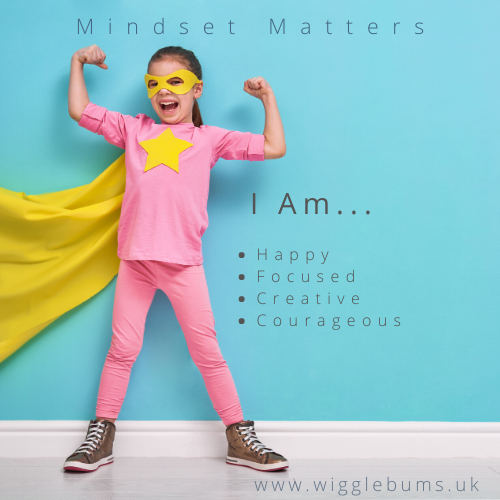
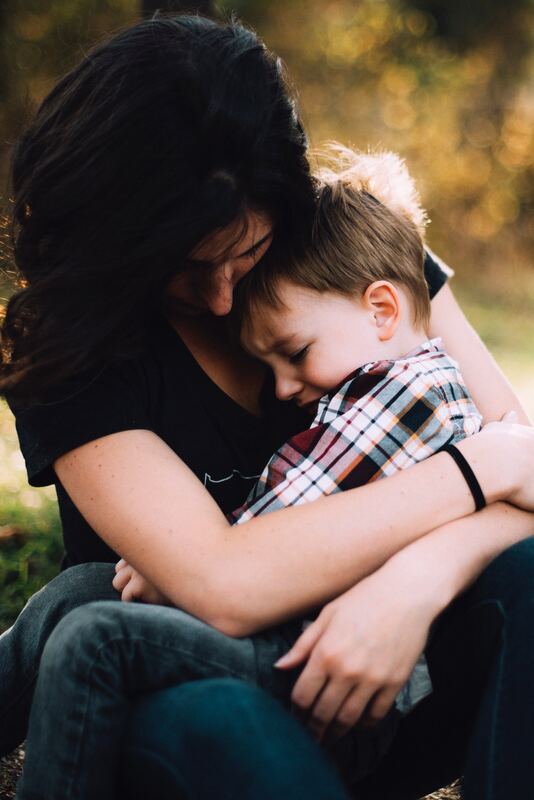
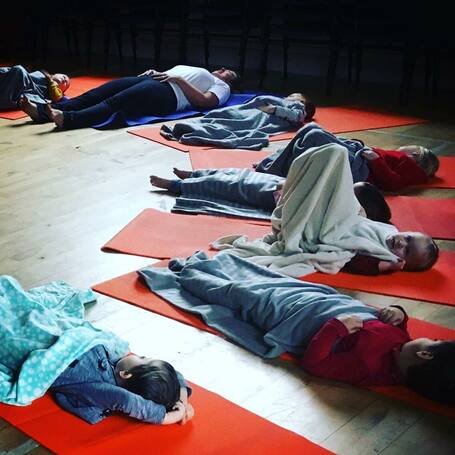
 RSS Feed
RSS Feed